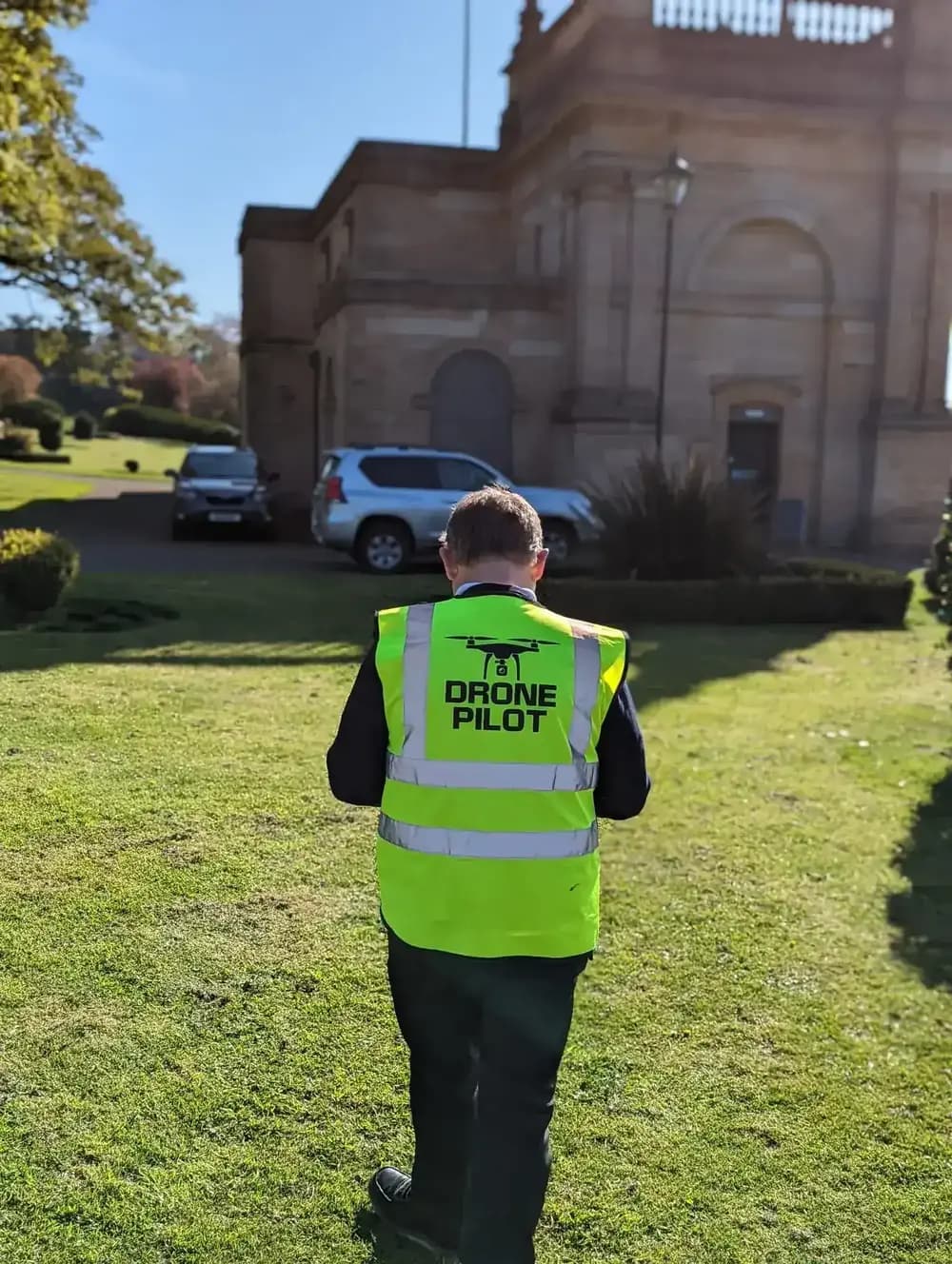
If you’ve recently bought a drone and are wondering about “drone licences,” you’ve likely come across the term GVC. The General Visual Line of Sight Certificate (GVC) is a qualification that opens up more advanced flying opportunities in the UK.
Having been through the process to get my own General Visual Line of Sight Certificate, I remember struggling to find a clear online answer to the simple question: "Why even get a GVC?".
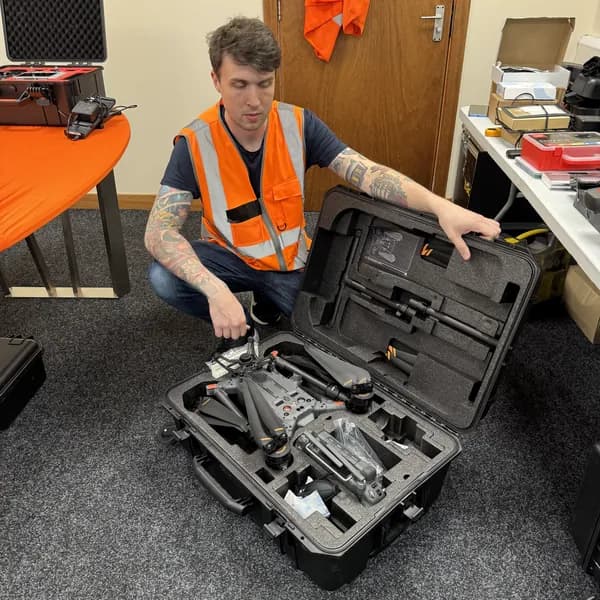
This guide is the resource I wish I'd had back then.
It will walk you through what the GVC is, whether you need it, what it lets you do (and doesn’t let you do), how to obtain it, how much it costs, and how it compares to the A2 Certificate of Competency. By the end, you’ll understand if pursuing the GVC is the right “next step” for you to become a full time drone pilot for hire.
30 Second Summary
- The General Visual Line of Sight Certificate (GVC) is a professional UK drone qualification that demonstrates a pilot's competence to conduct higher-risk flights in the Specific Category.
- Holding a GVC with a CAA Operational Authorisation allows you to fly heavier drones (up to 25 kg) in congested areas like towns and cities, which is forbidden under basic rules.
- To obtain a GVC, you must pass a theory exam, a practical flight assessment, and create a comprehensive Operations Manual through a CAA-approved training provider.
- While not legally required for all paid work, the GVC is considered the industry standard for most serious commercial drone operations in the UK.
- Unlike the more basic A2 CofC, the GVC is designed for advanced operations, enabling pilots to work in complex environments and accept a wider range of professional jobs.
What is a GVC Drone Licence?
A GVC, or General Visual Line of Sight Certificate, is a professional drone qualification in the UK, issued by the Civil Aviation Authority (CAA). It is not a "licence" in the traditional sense, but rather a certificate of competency.
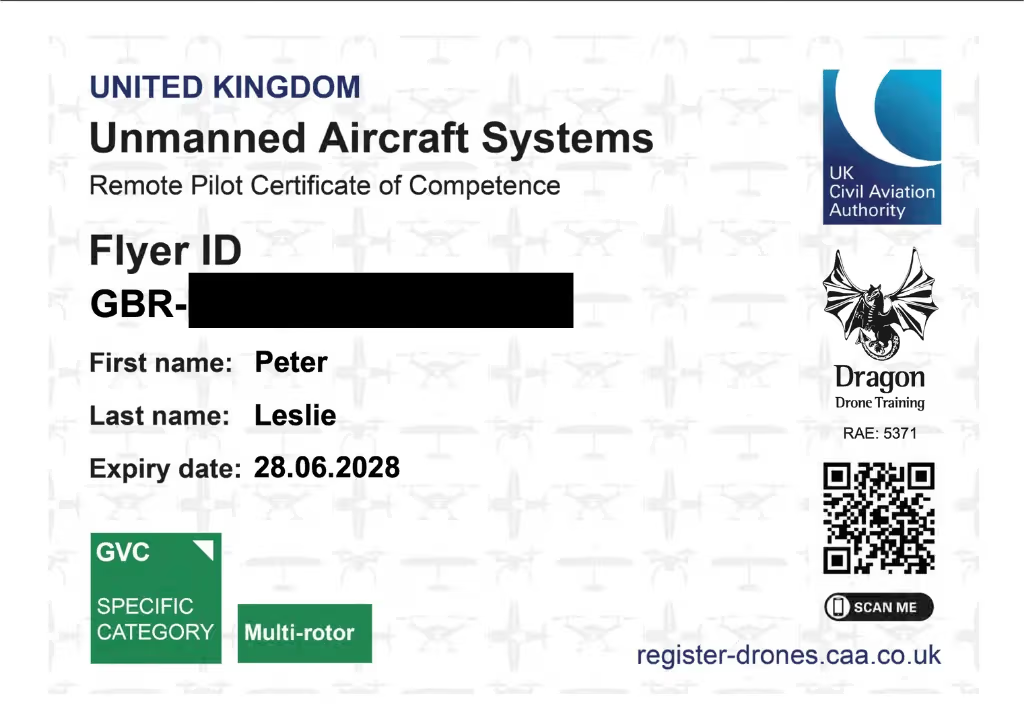
This certificate proves a drone pilot has the necessary skills and knowledge to operate safely in higher-risk situations. It is widely considered the standard qualification for commercial drone pilots or serious hobbyists who want to go beyond recreational flying limits.
What advanced operations can I conduct with a GVC?
With a GVC (plus the associated Operational Authorisation), you can fly in ways a basic hobbyist cannot. The GVC is the gateway to the Specific Category of drone operations, meaning you’re allowed to conduct higher-risk or more complex flights than the standard “Open” category rules.
Here are advanced operations unlocked by a GVC and Operational Authorisation (OA):
Flying in built-up areas: A GVC + OA lets you legally operate in congested environments (residential, commercial, industrial areas) that would otherwise be off-limits under basic rules. For example, you could fly a drone down a residential street for a roof inspection or film in a town center, which a hobbyist without GVC could not do.
Heavier drones up to 25 kg: Under an OA (specifically the standard PDRA-01 authorisation), you can pilot drones weighing 25 kg or less even in urban areas. By contrast, without a GVC you’d be limited to much lighter drones for close-to-people operations (typically under 2 kg in the Open category). This means you can use professional-grade drones (e.g. DJI Inspire or Matrice series) carrying better cameras or sensors.
Closer proximity to people: The OA typically allows you to fly closer to uninvolved people than Open category rules permit. In practice, you must keep at least 50 m horizontal distance from bystanders (which can be reduced to 30 m for take-off or landing). You still cannot fly directly over crowds or uninvolved assemblies of people, but being able to work within ~50 m vastly increases the scenarios you can tackle.
Operations at night and other scenarios: With a GVC, you can operate day or night, as long as you follow the procedures in your operations manual for nighttime flights. You’re also able to request access to otherwise restricted airspace (with additional permission) if needed for a job. Essentially, the GVC signals you have a higher level of pilot competency, so you’re trusted to fly in riskier conditions safely.
Keep in mind that all the usual safety rules still apply. For example, the 120 m (400 ft) altitude limit remains in place, and you must always keep the drone within visual line of sight (VLOS), which is generally no more than about 500 m away.
A GVC unlocks the ability to fly larger drones in crowded or sensitive environments (like towns, cities, industrial sites) with closer approach distances. These are things a basic drone hobbyist or even an A2 CofC holder couldn’t do.
This is why the GVC is considered the credential for “advanced operations.”
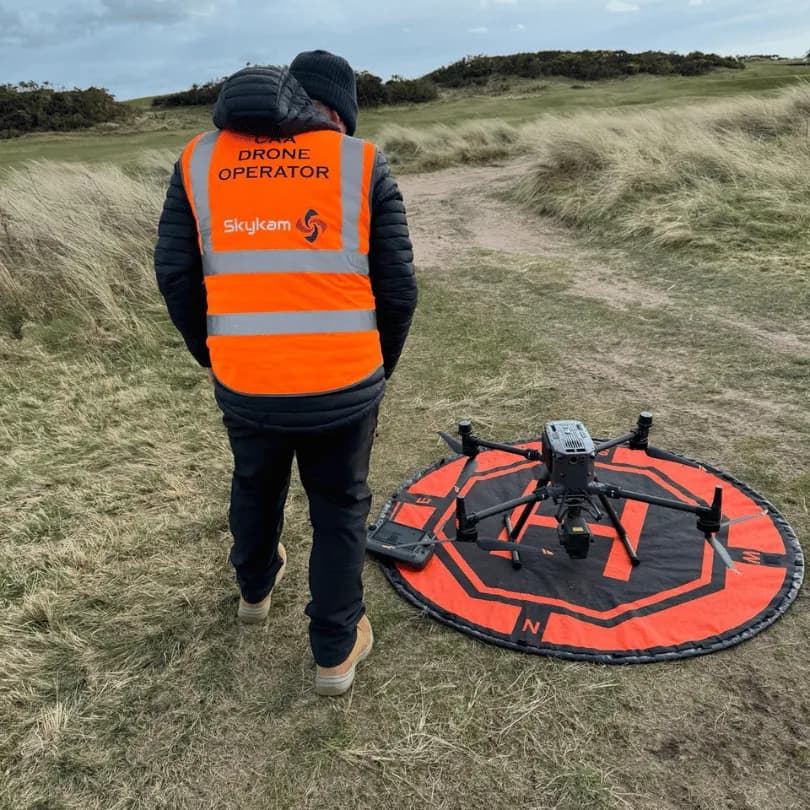
Is the GVC drone licence necessary for my commercial drone work?
Not necessarily required by law for every situation. But in practice, yes, if your work involves complex environments, you’ll likely need it.
The UK no longer separates “commercial” and “recreational” drone flying in legal terms. As of 2021, you don’t need any licence just because you’re getting paid.
Instead, the need for a GVC depends on where and how you need to fly. Here’s how to decide:
If you can do your work under Open category rules, you don’t need a GVC
For example, if you only use a very very small drone (sub-250 g like a DJI Mini) or you always fly in uncongested areas far from people, you can operate with just basic registration and perhaps an A2 CofC for some scenarios. The uk drone laws explicitly states there’s “no requirement to hold a permission or license to fly a drone for commercial use” as long as you stick to those low-risk Open category conditions.
So a real estate photographer using a 249 g drone in a quiet suburb, or a farmer surveying fields in the countryside, might not need a GVC at all.
However, most serious commercial drone jobs demand more than the Open category allows
In reality, many clients will want you to fly in built-up areas or near people – for example, inspecting a roof in a town, filming a wedding or promotional video in a city, or surveying a construction site. These scenarios occur in congested areas or require heavier equipment, which do fall into the Specific category. To legally say “yes” to those jobs, you would need a GVC and Operational Authorisation.
In other words, the GVC is what enables you to take on high-value professional work that a hobbyist could not. It’s widely regarded as “the professional standard for almost all commercial work in the UK.” Even when the law doesn’t force you, many drone insurers and clients effectively require drone pilots to hold a GVC or similar certification for liability and safety assurance.
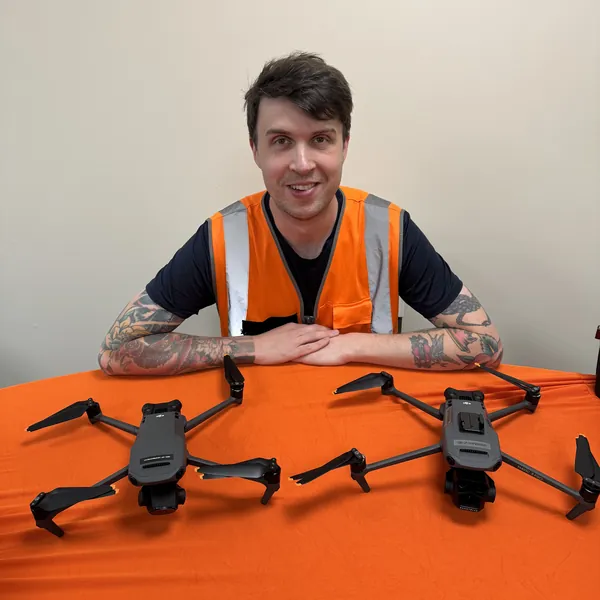
Don’t overlook recreational use of GVC-level privileges
It’s worth noting that the GVC isn’t just for paid work. You might be a hobbyist who simply wants to fly a bigger drone in more places. For example, if as an enthusiast you want to fly a 5 kg drone in your town center for fun (while obeying safety distances), you would still need a GVC and OA even though it’s recreational.
Conversely, a paid job that stays within basic Open rules wouldn’t need a GVC. So it really comes down to the operation’s risk and location, not whether money is involved.
Bottom line: If you have aspirations to do any advanced or urban drone projects, especially commercially, investing in the GVC is highly recommended. It future-proofs your qualifications.
You won’t be “locked out of urban and residential environments where the lucrative work is”.
Instead, with a GVC you can confidently say yes to jobs that involve flying closer to buildings or people (with proper precautions). This is something an A2 CofC alone wouldn’t permit. Many professionals actually get both the A2 CofC and GVC, but consider the GVC the must-have for a drone business.
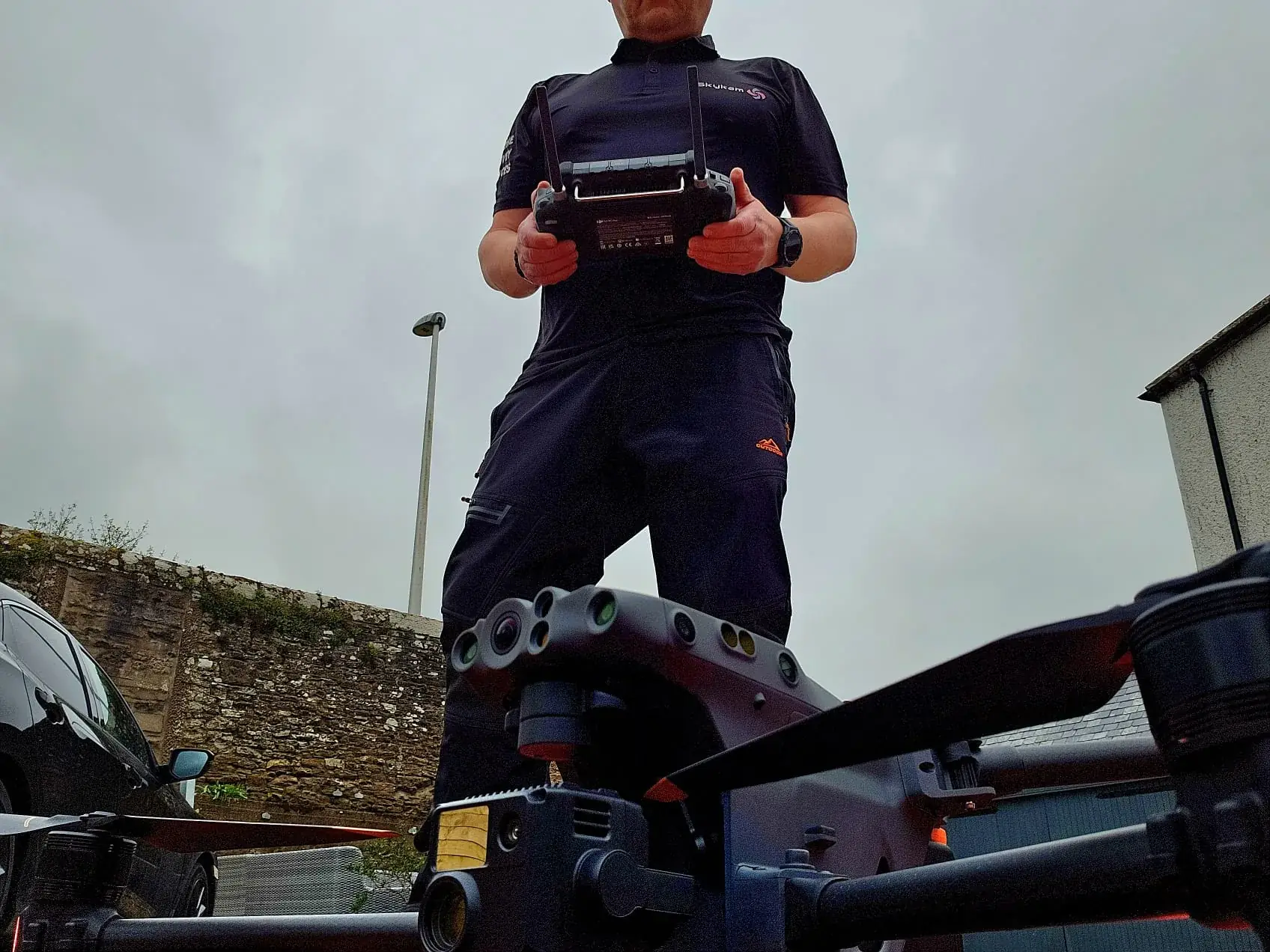
What is the step-by-step process to get a General Visual Line of Sight Certificate?
Earning your GVC involves training, testing, and documentation.
In practice, you will go through these steps, typically via a CAA-approved drone training provider, known as a Recognised Assessment Entity (RAE):
1. Complete the GVC theory course
Enroll with a CAA-approved training provider and study the GVC syllabus. This covers topics like air law, airspace rules, airmanship and safety, human factors, meteorology, navigation charts, drone technical knowledge, and operational procedures. Courses are often available online (on-demand videos or live webinars) or in-person classroom sessions.
Take your time to learn these fundamentals, as they form the backbone of safe advanced drone operations. Most providers also prepare you for the exam with practice quizzes or mock tests.
2. Pass the theoretical exam
You’ll need to sit a closed-book exam, often done online under webcam supervision or in person, to prove your knowledge. The GVC exam typically consists of 40 multiple-choice questions covering all the modules you studied. You must score at least 75% to pass.
This exam tests your understanding of UK drone laws, operating principles, weather, navigation, and so on – similar to a driving theory test but for drones ( I failed my driving theory more than the GVC theory).
The test GVC theory test covers:
UK air law and regulations
Operating principles and limitations
Weather and navigation
Human factors
Technical drone knowledge
A significant part of the exam involves reading aeronautical maps, which you'll have to use during the test. I'd advise getting one beforehand to learn how to interpret it, although your training provider will likely send one out before the course begins.
It's also a great idea to look up how to read NOTAMs (Notices to Airmen) and METARs (Aviation Routine Weather Reports) in advance. A lot of time is spent discussing these during the course, and you'll pick them up much faster if you've already familiarised yourself with the format.
Don’t worry, with proper study you can pass, and some training packages allow a free retake if needed. (I managed to pass it with 3 days of studying).
It is a closed-book exam. With no prior knowledge, I spent three evenings studying for it and managed to pass. My exam was done online, which meant I had to leave my webcam on for the duration so it could be remotely proctored.
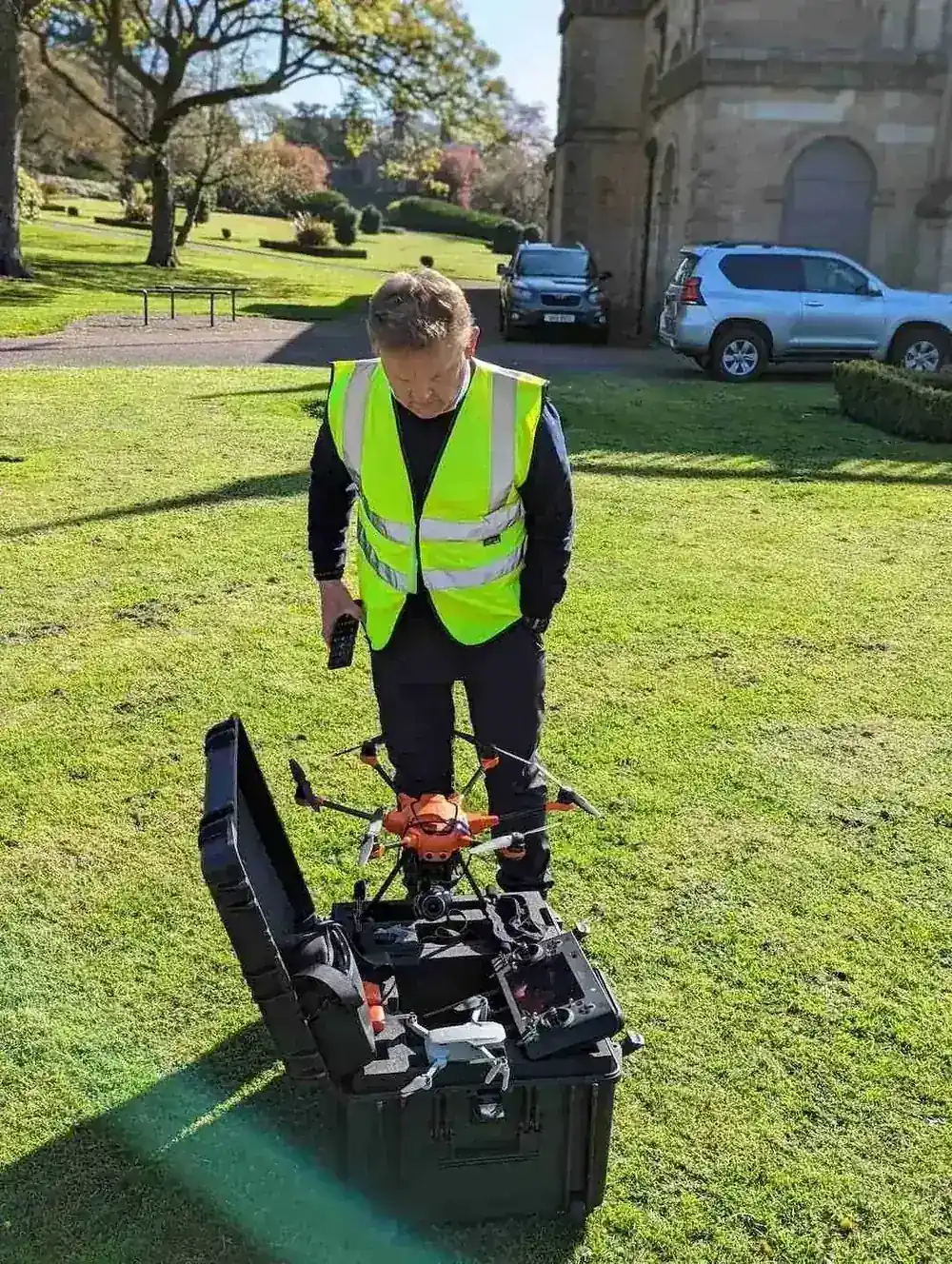
3. Undergo a practical flight assessment
Once you pass the theory, you’ll book a flight test (also called the Operational Evaluation) with an examiner, usually arranged by your training provider. Think of this as the drone equivalent of a driving test. Using your own drone, you must demonstrate safe flying skills and adherence to procedures. The examiner will want to see that you can control your drone precisely and confidently.
You’ll also be assessed on pre-flight checks and planning. For instance, you will show you can survey the area, identify hazards, and set failsafe settings appropriately.
Once airborne, you’ll be asked to perform a series of maneuvers to prove your control. During my own test, I had to fly a figure-of-eight pattern while maintaining visual line of sight, without looking down at the controller. I also had to complete an ascending and descending diamond shape.
The final, and most challenging, step was to fly the drone a good distance away (while still in VLOS), have it spin on the spot to lose its orientation, and then visually correct its direction to bring it back safely. Trust it is disorientating once you have lost
It’s normal to be a bit nervous, but preparation is key.
Many instructors recommend getting at least 10+ hours of practice (I say 20–25 hours) beforehand, including practice flying without GPS stabilization if possible. Also bring your own drone so you are most comfortable with the controls. That way, the controls will feel like second nature during the test.
4. Write or compile your Operations Manual
A crucial part of obtaining a GVC is creating an Operations Manual (OM). This is a detailed document describing how you will conduct your drone operations safely and in compliance with the rules.
We’ll cover the OM in depth later, but during the GVC process you will either draft it yourself or fill out a template provided by your training course.
Many GVC courses include guidance or a service to help you produce a proper Operations Manual, because it must meet CAA standards. Typically, you’ll finish your manual around the same time as your flight test.

5. Receive your GVC certificate
After you’ve passed both the theory exam and the practical flight test, and your Operations Manual is completed/approved by the training provider, you’ll be awarded the General VLOS Certificate. This is an official certificate proving you’re a competent drone pilot for Specific category operations.
However, your journey isn’t done yet!
The GVC alone doesn’t grant you new flight privileges until you take the next step. With your GVC in hand, you can now apply to the CAA for an Operational Authorisation.
In summary, training + exam + flight test + paperwork = GVC.
Most people complete these steps through a course that bundles everything over a period of days or weeks. You can do the theory at your own pace, then schedule the exam and flight test.
Once you have the GVC certificate, it essentially acts as your prerequisite to get the CAA’s authorisation for advanced flights.
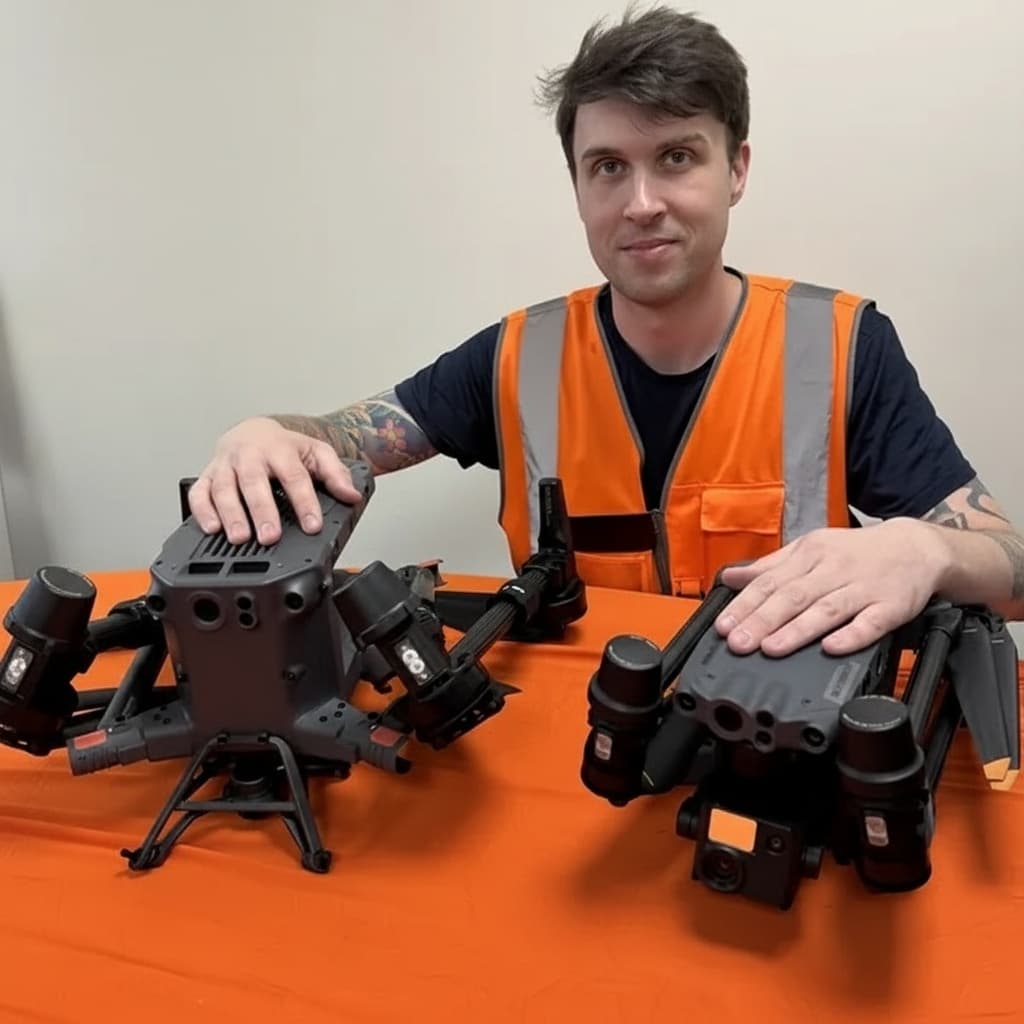
How much does a GVC course cost and what’s included?
Expect to invest a few hundred pounds into obtaining your GVC. Training costs vary depending on the provider and format, but generally a GVC course in the UK costs around £600–£1,000 in total.
Here’s a breakdown of costs and what you get for the money:
GVC training course fee: Approximately £500–£800 on average
Some well-known online courses cost ~£499 (for example, UAVHub’s online GVC course), while other providers with additional classroom days or extras might charge closer to £700–£1,000. Many training companies also offer a combined package that includes the A2 CofC along with GVC.
This is often for only a little more, which can be good value if you want both certificates. Always check what the quoted price includes; some are all-inclusive, others might list add-ons
Be aware that the CAA’s Operational Authorisation fee is not included in training costs.
After passing the course, you’ll pay the CAA £500 for your initial PDRA-01 authorisation application (this is an annual fee for the permission itself – more on that later). Also consider travel expenses for your flight test, as you might have to go to a testing location.
If you need to reschedule or retake exams, there could be small fees. For instance, a retake of the theory might cost £50+ and a flight test retake £150+ in some cases. Fortunately, many providers offer free unlimited mock exams and one free reattempt for the theory to help ensure you pass.
To give a rough idea: I spent ~£650 for the course + £500 CAA fee, so around £1,150 total in the first year to get qualified and authorised.
Subsequent years you’d only pay the CAA renewal fee and possibly a smaller fee every 5 years to refresh the GVC. It’s a significant cost, but if you plan to use your drone professionally, it’s quickly justified by the work you can do with a GVC that you otherwise could not.
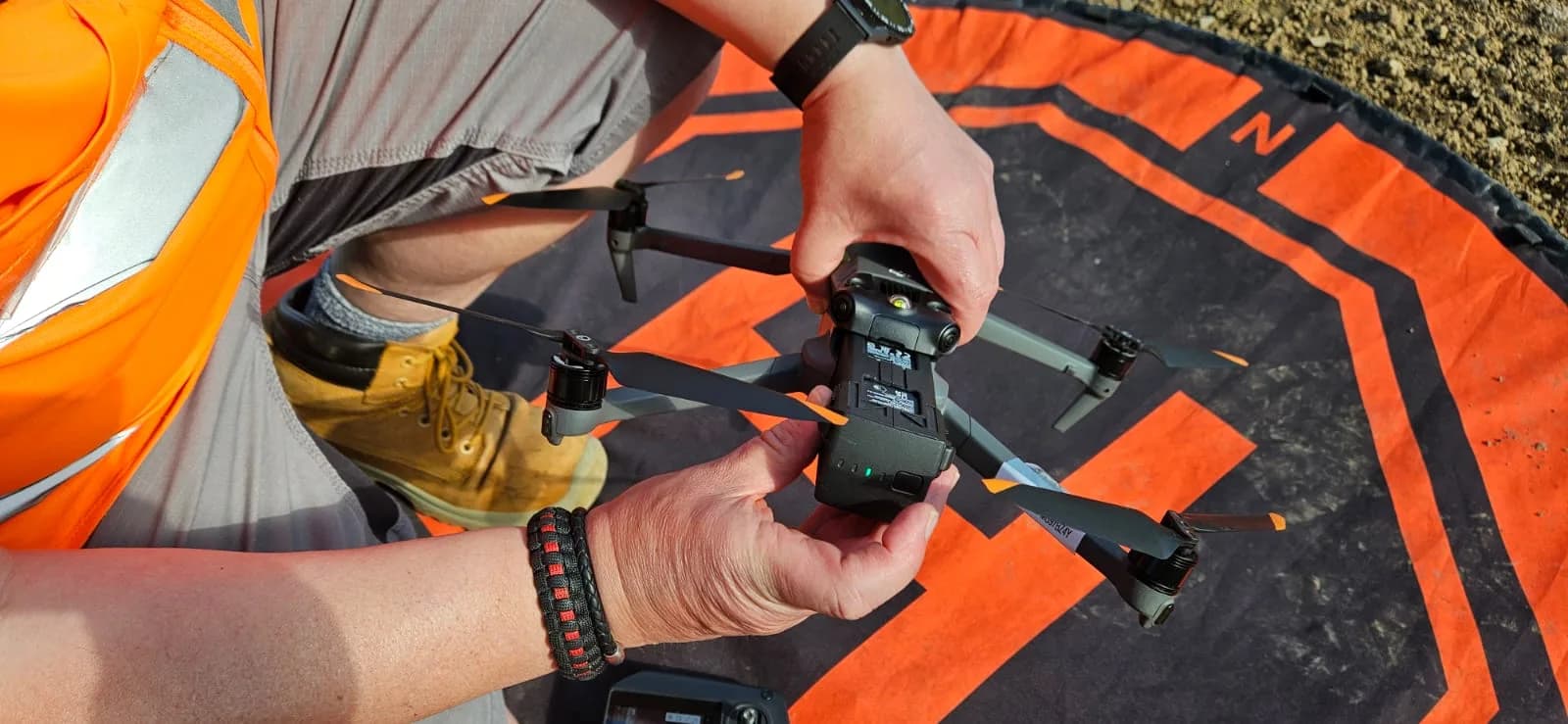
What is an Operations Manual and how do I create one?
An Operations Manual (OM) is a comprehensive document that outlines exactly how you will conduct your drone operations. It’s a required piece of documentation for obtaining an Operational Authorisation from the CAA.
Purpose: The manual demonstrates that you have thought through all aspects of safe drone operation. It details your procedures, policies, and risk mitigations.
What it contains: A typical OM includes sections on Organisation, Types of Operations, Drone Details, Normal Procedures, Emergency Procedures, Risk Assessments, and Maintenance.
Creating the manual: You are not alone.
Almost all GVC courses provide an Operations Manual template or builder. Many training providers will even draft the manual for you as part of the course.
Maintaining the manual: The OM is a living document. You must keep it updated when you buy a new drone or change procedures. The CAA can audit or ask to see it at any time, so it's important to follow what's written in it.
How do I apply for Operational Authorisation from the CAA after getting my GVC?
Once you have your GVC certificate, the final step is to get the Operational Authorisation (OA) from the UK Civil Aviation Authority.
Ensure you meet basic requirements: You’ll need a valid Operator ID, a Flyer ID, be at least 18 years old, and have appropriate third-party liability insurance.
Prepare your documentation: Have your GVC certificate and finalized Operations Manual ready. You do not usually need to send them in, but you must have them.
Fill out the online application: The CAA uses an online portal to apply for a PDRA-01 Operational Authorisation. The form will ask for your details, confirmation of requirements, drone information, and payment of the £500 fee.
Receive your Operational Authorisation document: After submitting, the CAA typically processes applications very quickly, often within 24 hours. You’ll get an email and can download your OA certificate. This is your official permission to fly, valid for 1 year.
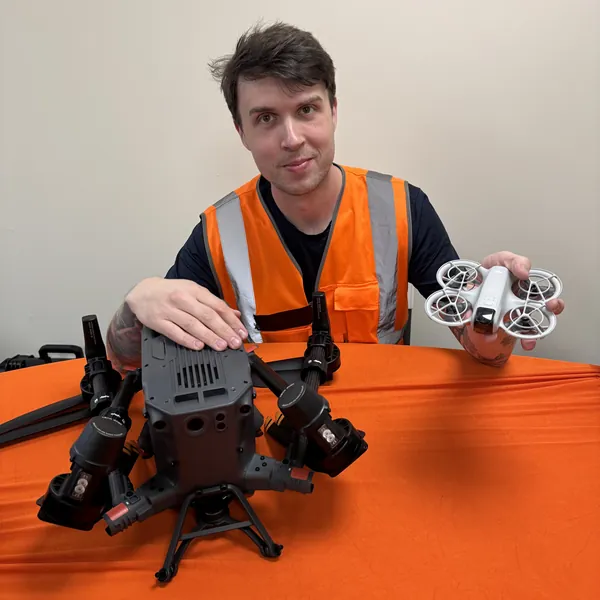
For how long are the GVC and Operational Authorisation valid, and how do I renew them?
- 1
GVC certificate validity: The GVC certificate itself is valid for 5 years. To renew, you'll typically need to complete a short re-certification process, such as a refresher course or passing a theory exam again.
- 2
Operational Authorisation validity: The OA is valid for 12 months (1 year) and must be renewed annually. The renewal process is a re-application online, where you confirm your details and pay the annual fee (currently £500).
- 3
Renewal requirements: For OA renewal, you must declare that you have logged at least 2 hours of flight time in the last 3 months to ensure proficiency. You also confirm that your Operations Manual is current.
In short: every year, budget for the OA renewal fee and paperwork; every five years, plan to refresh your GVC.
What are the key differences between the GVC and the A2 CofC?
The A2 Certificate of Competency (A2 CofC) and the GVC are two distinct qualifications, and it’s important to understand what each allows.
Operational Category: An A2 CofC is used in the Open Category (specifically the A2 subcategory) for lower-risk flights. The GVC is for the Specific Category, which requires obtaining a CAA authorisation.
In essence, A2 is an “easier” certification for moderately close-to-people flights with small drones, and GVC is the more rigorous certification needed when you go beyond those basic scenarios.
Drone Weight Limits: The A2 CofC applies primarily to drones up to 2 kg maximum takeoff weight (especially if they’re class-marked as C2 in the future). By contrast, a GVC with OA lets you fly drones up to 25 kg in the Specific category. That’s a huge difference.
Distance from People: With A2 CofC, the rule is you must not fly closer than 50 m horizontally to uninvolved people for drones heavier than 500 g. GVC/OA permissions, on the other hand, allow flight closer to people because specific risk mitigations are in place – typically down to that ~30–50 m range.
Where You Can Fly (Geography): The A2 CofC is somewhat limiting in urban environments. With a GVC + OA, flying in busy, built-up areas is explicitly allowed.
In short, A2 is for open fields and lightly populated areas; GVC is for inner cities and complex environments.
Training Intensity: The A2 CofC is relatively quick and straightforward to obtain. The GVC involves more comprehensive study, a harder exam, and a practical flight test. A2 courses cost around £100–£250, whereas GVC courses are around £600+.
Validity and Renewal: Both certificates are valid for 5 years. The Operational Authorisation tied to the GVC has yearly fees for renewal.
Use Case Summary: An easy way to think of it is that the A2 CofC is aimed at the hobbyist or semi-pro who wants a bit more freedom than basic rules allow. The GVC is the professional standard for nearly all serious commercial operations.
The GVC turns “no, can’t do that” jobs into “yes, we can do it safely.” That’s the key difference in real-world terms.
Ready to Hire a GVC-Qualified Drone Pilot?
This guide has shown that obtaining a GVC is the essential step for any drone pilot looking to undertake advanced commercial operations in the UK. It unlocks the ability to fly heavier drones in complex, built-up areas, turning potential projects into reality. But once you know you need a GVC-qualified professional, how do you find one?
That's where HireDronePilot comes in. We solve the challenge of connecting businesses with certified, experienced drone operators for complex aerial tasks. Our network is filled with professionals holding the necessary qualifications, including the GVC, ready to tackle projects that require a higher level of skill and compliance.
HireDronePilot is the UK's premier managed marketplace, connecting businesses with verified professional drone pilots for hire. We streamline drone services through a competitive bidding process, ensuring quality, compliance, and value for every aerial project across the United Kingdom.
Whether you need a detailed roof inspection in a busy city or cinematic filming for a commercial project, find the right expert for the job.
Visit HireDronePilot.uk to post your project and receive competitive quotes from top-tier, GVC-certified drone pilots today.
About the Author

Written by
Peter Leslie
Peter Leslie is a CAA-approved commercial drone pilot with 10+ years experience and over 10,000 flight hours. He holds the GVC and A2 CofC drone licences with full CAA Operational Authorisation. Peter is a member of ARPAS-UK, the UK's non-profit trade association for the drone industry. He founded HireDronePilot to connect UK businesses with qualified, insured drone operators.
Looking for More Drone Work?
Join the UK's leading network of professional drone pilots and grow your business.
Open Access
Bid on any job - all jobs open to all pilots
Grow Revenue
Access high-value commercial projects
Stay Busy
Fill your schedule with regular work
Related Articles

Our Drone Survey Service In Stirling, Scotland
Bringing you Stirling drone survey data from areas no one else can fly.

How Much Does A Drone LiDAR Survey Cost
Forecasting your drone LiDAR survey cost requires understanding what's hidden beyond the initial quote.

Step By Step Process Of Drone LiDAR Survey
Next, discover the crucial post-flight steps that determine your survey's success.
